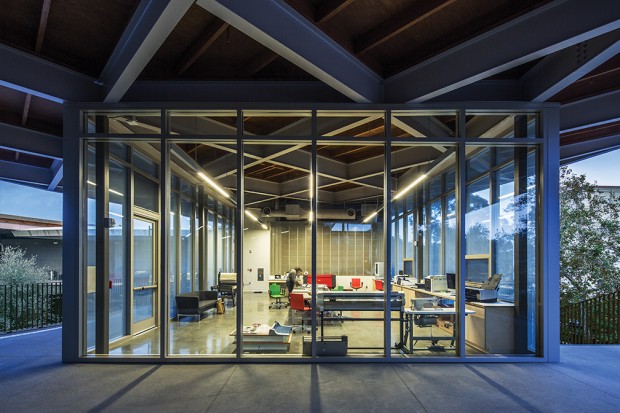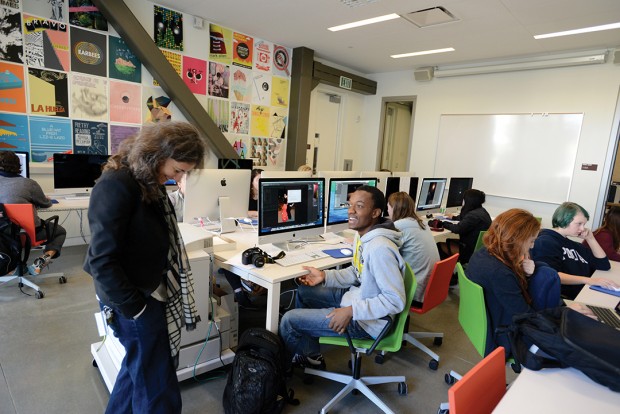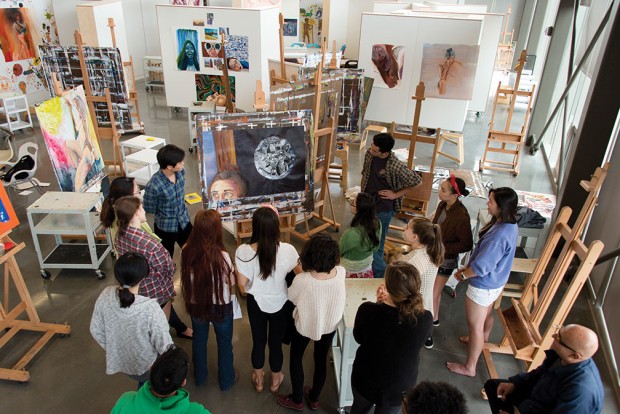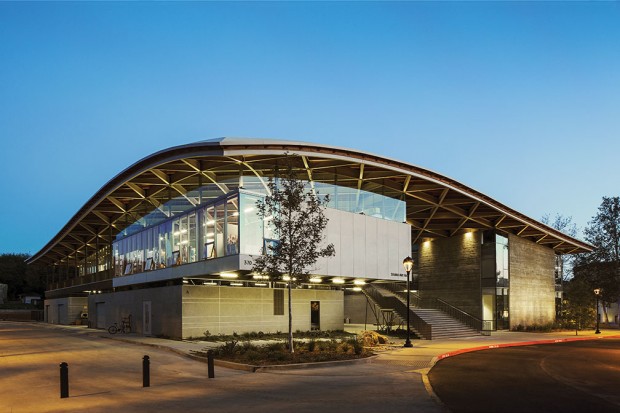
LAST OCTOBER, POMONA opened a stunning new 35,000-square-foot Studio Art Hall that brings together, under a gently flowing roof, a veritable village of indoor and outdoor spaces dedicated to art making, art appreciation and art interaction.

Designed by wHY architect Kulapat Yantrasast, the building’s exterior is marked by extensive use of glass, which floods the separate studios with natural light. The building’s open and porous design emphasizes connections, with glass walls exposing the various disciplines during the artmaking process and creating a transparent, collaborative atmosphere in which to explore new ideas, materials and artistic production.

Maximizing the benefits of its sunny Southern California location, floor-to-ceiling windows in many studios frame the expansive San Gabriel Mountains or adjacent oak grove. The arching wood and steel roof echoes the rise and fall of the nearby mountain range and draws parallels to the historic bow-string trussed warehouses that are home to Los Angeles’ thriving art scene.

“The seeds for new ways of thinking are planted through the serendipitous encounter, the unplanned studio visit and the informal visibility of the workspaces and studios,” says Mark Allen, chair of the Pomona Art Department. “The building’s non-hierarchical gathering of mediums fuels an openness and unrestricted approach to art.”

“Cross-pollination of ideas cannot occur in walled-off art studios,” says Yantrasast. “The Studio Art Hall’s concept and design reflects Pomona College’s ethos of nurturing innovation and culturally-minded graduates who either stay in the arts or venture into science, humanities or business. This building really could not exist a
nywhere else.”

Built to the LEED Gold standards of the U.S. Green Building Council, the $29 million Studio Art Hall forges new connections to disciplines beyond the arts. Major program elements are arranged around a central courtyard that accentuates a prominent north-south path through campus. The studios have the capacity to expand the working environment into the natural elements and pedestrian spaces.

